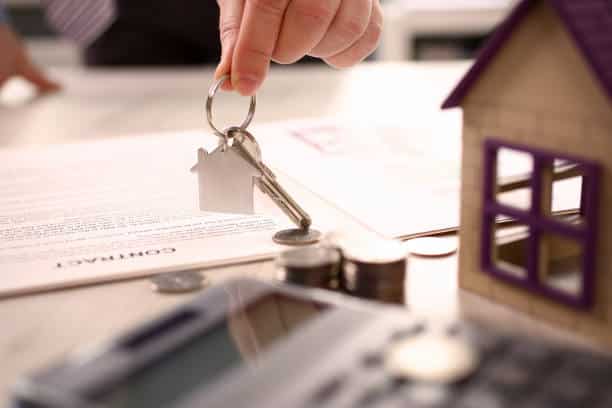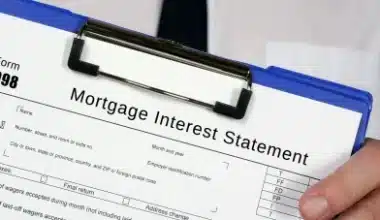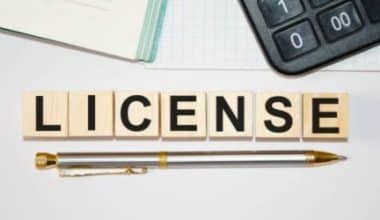Buying a house is no easy feat and can be challenging and often confusing. For most home buyers, calculating how much they need for a house down payment and saving up for it is the most challenging part. But it is less taxing when you have the right information and a clear goal, so let’s figure out how much you need for a down payment so you can set clear goals.
What’s a good down payment amount? How do you calculate the down payment for the house? Well, let’s get into it!
What is Down Payment?
A down payment on a house is the amount the buyer pays upfront when purchasing the property. A buyer often makes a down payment when purchasing an expensive good, such as a house or car. It’s a percentage of the total cost of the house.
A down payment can significantly reduce the amount the borrower owes to the lender, the amount of interest they will pay over the life of the loan, and monthly payment amounts. Furthermore, they are a percentage of the purchase price and can range from as little as 3% to as much as 20% for the purchased property.
Why Make Down Payments?
Down payments are beneficial to both buyers and lenders. For lenders, down payments reduce the risk. This is because homeowners who invest with their money will likely not default on their mortgages.
For home buyers, down payments will reduce loan amounts and interest costs and give them competitive offers. Also, buyers can avoid paying additional monthly private mortgage insurance fees if they pay a high down payment amount.
How to Calculate Down Payment?
You can use a down payment calculator to calculate the amount for the house you want to purchase. Remember to also factor in closing costs, title fees, and other upfront costs when calculating your total down payment.
There are several factors to consider when deciding on your down payment:
- Loan Type: The minimum down payment depends on the loan you’re using to finance the purchase. Some loans, like FHA loans, allow for lower down payments (3% or 3.5%)
- Interest Rates: Low-interest rates may make it more sensible to put less money down and invest the remaining amount elsewhere
- Savings and Emergency Funds: Having an emergency fund and savings after purchasing a home is essential. If a lower down payment allows you to maintain your financial safety net, it may be a better option.
- Market Conditions: In a competitive market, a higher down payment may make your offer more appealing to sellers
To calculate the house down payment, you need to know the purchase price of the home and the desired down payment percentage.
Step-By-Step Process to Calculate the House Down Payment:
- Determine the purchase price of the home.
- Decide on the desired down payment percentage. This can range from 3% to 20% or more, depending on the type of loan and your financial situation.
- Calculate the house down payment amount by multiplying the purchase price by the down payment percentage.
Example:
Purchase price of the house – $350,000
Desired down payment percentage – 5% (0.05)
Therefore, the down payment amount is $350,000 * 0.05 = $17,500.
Hence, the down payment amount is $17,500.
It’s important to note that the ideal down payment amount is 20% of the home’s purchase price, but many buyers put down less than 20%. The more you put down, the lower your interest rate and monthly payment may be.
When choosing a down payment amount, consider the differences between a large down payment and a smaller one. Private mortgage insurance (PMI) payments can be eliminated, and interest rates can decrease if the down payment is big enough. In comparison, a smaller down payment requires less money upfront and may allow you to use the funds for other purposes, such as home improvements or debt repayment.
Also, you can use online calculators like the ones provided by calculator.net to help you calculate your ideal house down payment amount and estimate your monthly mortgage payment.
How Much Do You Need for a Down Payment on a $300 000 House?
The down payment for a $300,000 house depends on the loan program and your financial situation. Here are some standard loan programs and their required down payments:
- Conventional Loan: Typically, this mortgage type requires a 3% to 20% down payment of $9,000 to $60,000 for a $300,000 house.
- FHA Loan: Requires a minimum 3.5% down payment of $10,500 for a $300,000 house
- VA Loan: May offer 0% down payment options for eligible veterans and service members.
- USDA Loan: May offer 0% down payment options for eligible rural and suburban homebuyers.
Is 5% Down Payment Enough for a House?
A 5% down payment is acceptable if you’re a first-time home buyer. However, a monthly PMI fee will be added to any down payment of less than 20%, raising your monthly mortgage payments. A lower down payment can help you achieve homeownership more quickly but also presents certain risks. Therefore, it’s important to consider the risks and benefits of a lower down payment.
- You may be required to pay private mortgage insurance (PMI) if your down payment is less than 20% which will increase your monthly mortgage payment.
- You may have a higher chance of being underwater on your mortgage if you need to sell the house for more to pay off the loan.
- A lower down payment could hurt your chances in a competitive market when sellers have multiple offers to choose from
Is 10% Down Payment Enough for House?
For a first-time home buyer, a 10% down payment can be enough to purchase a house. There are down payment assistance programs (DPAs) that nonprofit organisations and state and local governments fund for people who cannot afford the required down payment.
These programs offer money to make homeownership more accessible for lower-income or disadvantaged home buyers. Lower down payment loans, such as 3.5% FHA loans, are designed to make homeownership more attainable for first-time buyers.
Ultimately, the decision between a 5%, 10%, or 20% down payment depends on your financial situation, goals, and comfort level. It’s essential to weigh the pros and cons and decide what best suits your needs.
How Much Should I Put Down On My First House?
It’s important to consider your finances when deciding how much to put down on the house. Putting 20% down can be beneficial if it is easy for you to afford it.
However, if putting 20% down would drain your savings and make you house-poor, it might be better to opt for a smaller down payment, such as 5% to 10%. A 30-40% down payment is also good if your finances allow it.
The amount you put down as a down payment for a house should depend on the loan type and your finances. Evaluate your finances, consider your options, and then decide on the right down payment amount to put down.
Also, note that putting down less than 20% may require you to pay private mortgage insurance (PMI), which adds to your monthly mortgage payment, while a higher down payment can also help you secure a better interest rate.
What Is the Minimum I Can Put Down in a House?
The minimum down payment for a house depends on the type of loan you get, and it generally ranges from 3% to 20% of the purchase price of the home.
The ideal down payment amount is 20% of the home’s purchase price, as it can help you avoid paying private mortgage insurance (PMI) and result in lower loan amounts and smaller monthly payments. However, the 20% down payment rule is not a fixed percentage, as the average down payment for first-time buyers can range from 8% to 13%.
Also, some loan programs allow as little as 3% or even zero down. Additionally, banks might offer 90% of the property as a home loan, and the buyer has to arrange only 10% of the money as a down payment.
What to Avoid When Buying a House?
When buying a house, there are several things you should avoid to ensure a successful and smooth process. Avoiding these mistakes and working closely with an experienced real estate agent will increase your chances of a successful home purchase. Some of the things not to do include the following:
#1. Avoid Shopping Without an Agent:
Although you can start by looking at house pictures online, working with a professional when you’re serious about buying a property is essential.
A buyer’s agent will guide you through every step of the home-buying process and advocate for your best interests.
#2. Avoid Making Big Purchases Before Closing a Deal:
Avoid taking on new debt while buying a house, as it can hurt your credit score, affect your loan’s interest rate, or even result in a rejected mortgage application.
Before applying for a mortgage loan, don’t finance a car or other big purchases because it will raise your debt-to-income ratio (DTI).
#3. Avoid Making Lowball Offers
While you want a good deal, making an absurdly low offer could offend the seller and result in no counteroffer. Trust your agent to help you assess the value of a house and get a winning bid.
#4. Avoid Buying When You Should Rent
If you plan on staying in a home for a maximum of a few years, renting may be a better option.
When deciding whether to buy or rent, you should consider how much money you have and how likely you are to need unexpected repairs.
#5. Avoid Being Emotional About a House
Keep your emotions under control during house-hunting, as they can cloud your judgment and lead to overpaying for a home or overlooking costly issues.
#6. Avoid Putting Off a Purchase Over Down Payment Percent
Many first-time buyers assume they need a 20% down payment to buy a house. While having 20% down has its perks, waiting until you have 20% down can push your home-buying timeline out by years. Several loan programs available today require little or no down payment.
Average House Down Payment
The average down payment for a home can vary depending on several factors, including the buyer’s age, whether they’re buying a home for the first time or a repeat buyer, the state you’re purchasing in, and the type of mortgage.
The average down payment for all home buyers in 2022, according to the National Association of Realtors (NAR), was 13%. Since 2018, the typical down payment for first-time buyers has been 6-7%, whereas the regular down payment for repeat buyers was 17% that same year.
The average down payment can also vary by state due to differences in housing prices. In 2021, the typical down payment on a mortgaged home was between 10 and 19% of the purchase price. Younger buyers are more likely to purchase a home with less than 20% down, with 63% of Gen Z and Millennial buyers doing so.
The minimum down payment for a house depends on the loan type. Conventional loans usually require at least 3% down, while FHA loans require 3.5% down. USDA and VA loans do not require a down payment.
Although a 20% down payment is traditionally recommended, many buyers put down less than 20%. There are many reasons to consider putting down anywhere from 3% to 20%, such as having more loan options and lower interest rates.
- What Is Down Payment and How Do You Calculate It?
- CASH HOME BUYERS: How To Find Cash Buyers
- How To Make the Most Money When Selling a House
- REAL ESTATE COMPS: Detailed Guide on Finding Real Estate Comps






